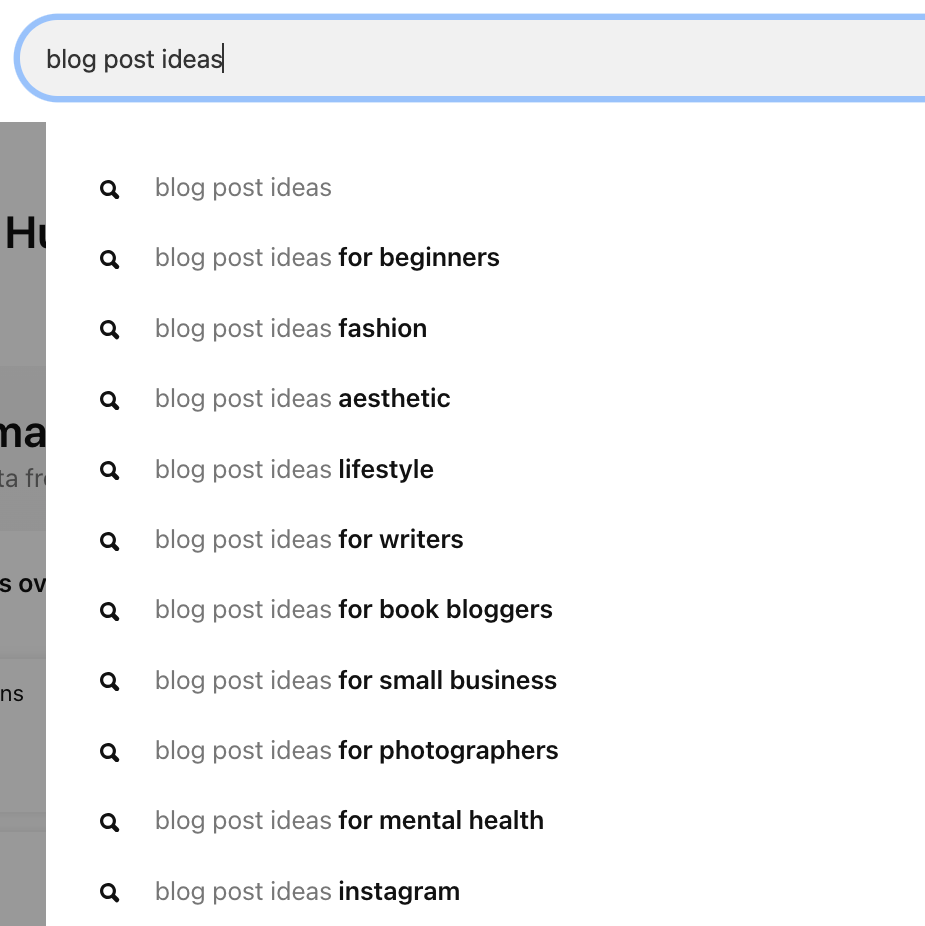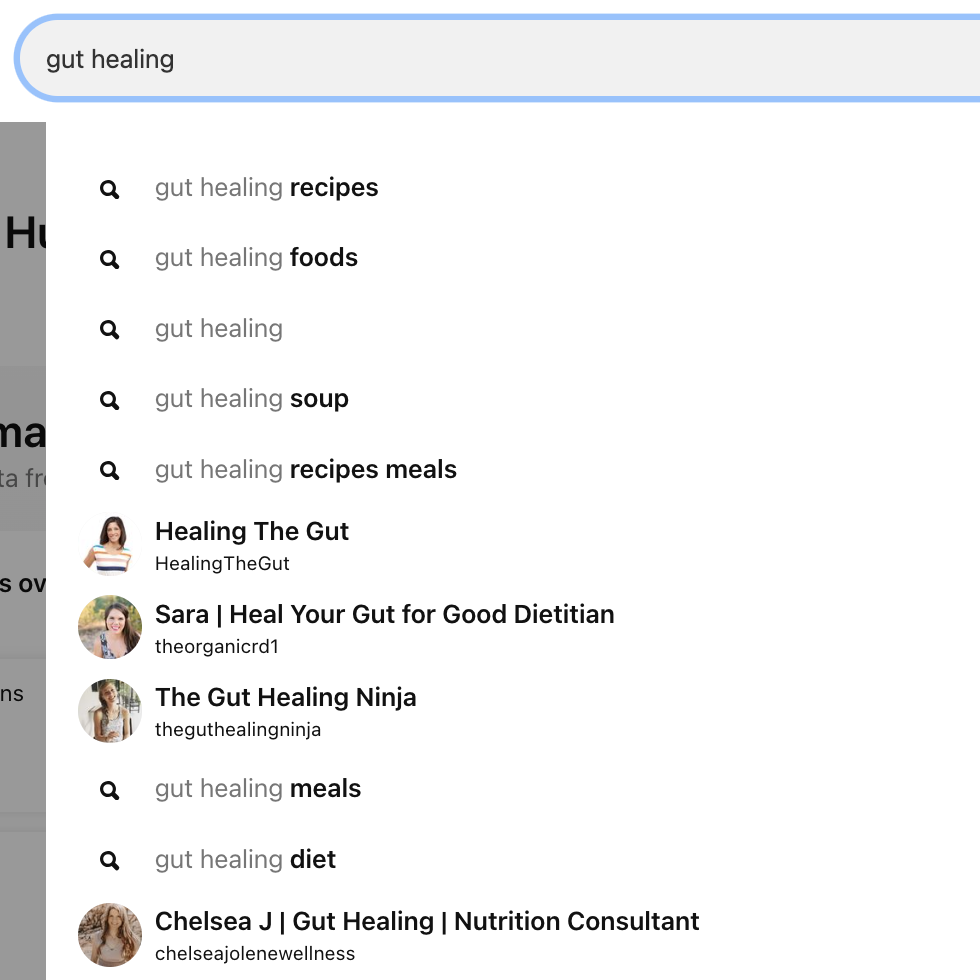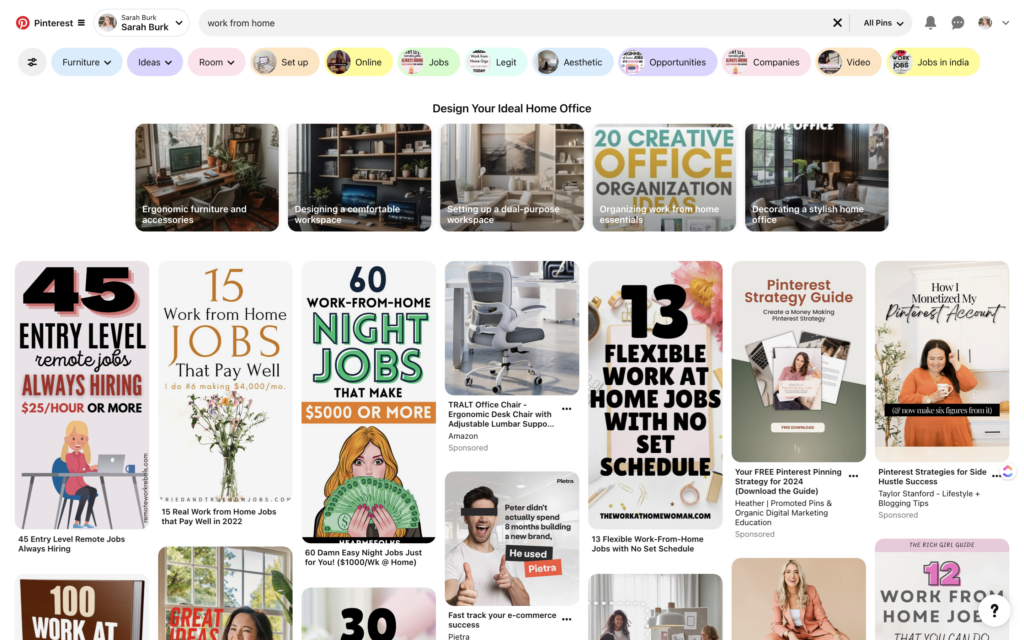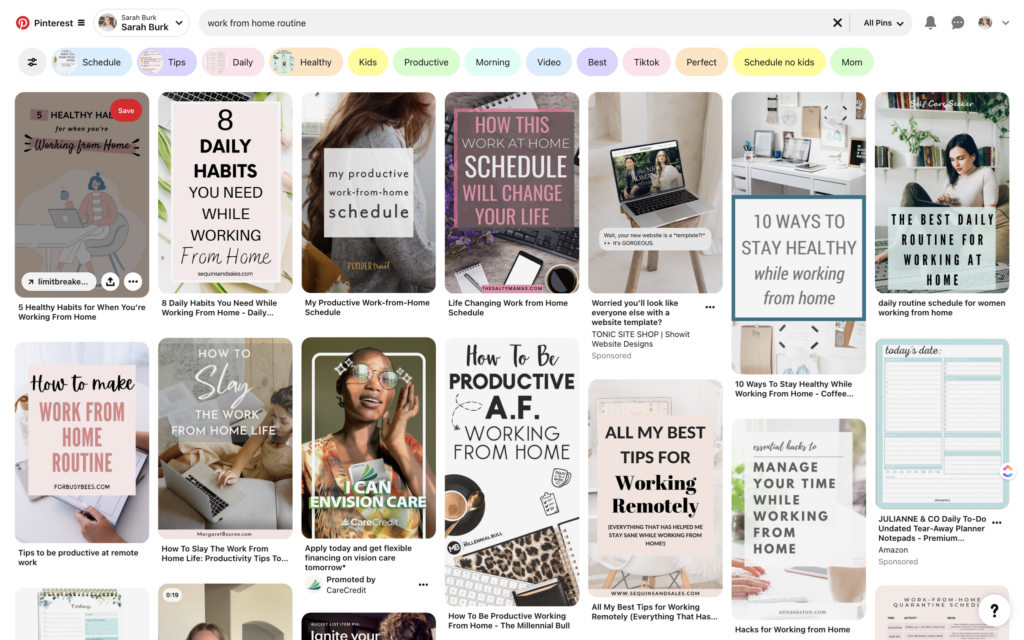A Pinterest content strategy is the difference between just “doing” Pinterest and using Pinterest marketing to book more clients, make passive income, and expand your reach exponentially.
When you use Pinterest effectively, you can reach a brand-new audience full of users ready to take action.
But you can’t just throw up a few pins and call it a day — you have to know how to strategically create content and pins that will reach more of the right people and actually convert them.
That’s where most Pinterest education fails, and that’s what I’m here to fix.
I’m teaching you how to create a Pinterest content strategy that converts, including my 3-step planning process and a flexible framework to keep up with it all!
2 Components of a Successful Pinterest Content Strategy
Effective Pinterest marketing depends on a thorough understanding of two components: your Pinterest SEO and your Pinterest audience.
Let’s start with your Pinterest SEO!
There are a variety of factors that determine how your content ranks in the Pinterest algorithm, but the most important of all — and one that you actually have some control over — is your Pinterest SEO.
Reminder: Pinterest SEO is the process of optimizing your content for the Pinterest search engine through the use of keywords.
Pinterest Keyword Research Process
Pinterest keyword research is an essential part of Pinterest SEO, which makes it an essential part of creating a Pinterest content strategy. I recommend starting by researching keywords for your account overall, then supplementing with content-specific keyword research as needed.
1. Brainstorm Broad Topics
Start by taking a look at your existing content, products, and services. What are some broad topics (1-2 words long) that encompass the themes or categories of your content and offers?
Most business owners can come up with around 3-5 distinct categories, but it’s totally fine if you end up with more or less!
If you’re struggling to identify these broad topics, think of them like blog categories or product collections. What “tags” would you give your content on another platform?
Here are a few examples!
Example 1: Natty Writes, Blog Writer
Natty is a blog writer for business owners, which means blogging is the main focus of her content and offers.
Whereas “blogging” might be just one of those broad topics I pull for a copywriter or general content marketer, for Natty, it makes sense to choose a few more specific blog-related topics as her broad categories.
These are the 5 I would choose to start with:
- Blogging Tips
- Blog Post Ideas
- Content Planning
- Starting a Blog
- Marketing Strategy
Example 2: Mia Giommi, IBS & Gut Health Nutritionist
Just based on Mia’s title alone, I’m absolutely going to pull “Nutrition” and “Gut Health” as two main categories for her keyword research. Digging a bit further into her freebies and blogs, she talks a lot about bloating, so I’d add “Bloating” as a broad topic to research, as well!
It’s okay if there’s overlap or you’re uncertain of the exact words; you can always refine your answers later!
2. Incorporate Your Target Audience
We’ll take a deeper look at your audience in just a bit, but for now, consider who you want to reach with your Pinterest marketing. Think about the things they’re likely searching for, what industries they’re in, etc.
This process might uncover some additional relevant topics to add to your brainstorm list!
How It Works:
Example 1: Continuing to use Natty as an example, we might want to add “Business Marketing” and “Blogging for Business” to her list of categories. This would be especially important as a lot of blogging-related keywords on Pinterest pull up content related to lifestyle and influencer-type blogging.
Example 2: For Mia, we’re going to consider what other, perhaps more broad categories her audience might be searching on Pinterest. This includes things like “Wellness” and “Self-Improvement”.
3. Use Pinterest’s Predictive Search to Gather Long-Tail Keywords
Once you have your list of broad topics, you can head straight to Pinterest and start searching! Type those topics into the search bar and see what pops up as suggested searches. Those phrases, as long as they’re relevant to you and your content, will be great long-tail keywords to use in your Pinterest content.


How to Choose the Right Pinterest Keywords
Your Pinterest keyword strategy can be a lot more simple than your keyword strategy for Google SEO, but there’s still some fine-tuning you can do to make sure you’re targeting the right keywords.
Before you plan your Pinterest content strategy around a single keyword, do a preliminary browse of the pins currently ranking for that keyword or phrase.
What you’re looking for here is to make sure that the ranking pins match the content you would plan to create for that keyword. If they’re wildly different, that might be a sign that you should choose a different keyword to target.
Here’s one example for the “work from home” keyword. A search for “work from home” pulls up mostly blog posts about job opportunities and remote work ideas. But if your content is more about productivity, time management, and scheduling your work from home life, you might want to choose a keyword that’s more reflective of that, like “work from home routine”.


How Your Pinterest Audience Impacts Your Content Strategy
Now let’s move into the second component of a successful Pinterest content strategy — your Pinterest audience!
Understanding who your Pinterest audience is and how their behavior differs from your target audience on other platforms is another essential factor in your Pinterest content strategy.
After all, you have to know who you’re trying to reach in order to do so effectively.
Generally, Pinterest users use the platform to search for specific inspiration, ideas and solutions. They’re often more motivated to take action if they’re convinced it’s the right fit for their needs. And typically, they don’t care about you or your brand yet.
What that means for your content strategy on Pinterest is that you have to lead with value and create content that nurtures your audience through every stage on the path to purchase.
How to Identify Your Pinterest Audience
Assuming that you already have a pretty good concept of who your target audience or ideal client is, the most important step to create content for that audience on Pinterest is figuring out what things they’re typically searching for on the platform.
Try to get outside of your own perspective and imagine yourself in the position of your ideal client. What are they realistically looking for on Pinterest that your content could be showing up for?
Remember! These Pinterest audience members are likely still in the DIY stage, so what information are they looking for before they’re ready to hire you or make a purchase?
Pinterest Content Strategy Planning Process
Now that you understand the two components that make up a successful Pinterest content strategy, it’s time to make your own! And you can do just that with 3 simple steps. I strongly recommend taking some time to think deeply about these questions, as they’ll form the foundation of everything from your content creation to analytics interpretation.
Step One: What are your goals from Pinterest?
Or, more simply, what is your desired outcome from marketing on Pinterest?
Here are a few ideas to get your wheels turning:
- Building brand awareness
- Driving website traffic
- Growing your email list
- Selling products or services
While you can set target metrics for your Pinterest marketing, I don’t typically recommend it, especially if you’re just doing organic PInterest marketing. Specific numbers can be hard to target and realistically aim for, so keep it general and decide a primary outcome you’d like to achieve.
Step Two: What content do you have to repurpose?
Knowing what content you have available will make it easier to decide what content to pin to reach those goals.
Start by making a list of literally everything you could create pins for — blog posts, products, landing pages, portfolio projects, website pages, podcast episodes, YouTube videos, etc.
Then, go through that list and remove anything that doesn’t support your goals or “fit” on Pinterest.
Step Three: How much time do you have to dedicate?
I want you to be super realistic in answering this question. My goal in teaching you Pinterest marketing is to truly make it a sustainable addition to your existing marketing strategy. Being overly ambitious might sound like the path to success, but if you can’t maintain it, it’s not actually benefiting you as much as you think.
With that being said, decide how often you’re going to pin or how much time you have available to set aside to work on your Pinterest content.
I highly recommend working in batches, so you can start by deciding if you’ll create pins on a weekly basis, monthly, per post, etc.
Based on that decision, set a goal to figure out how many pins you need to create during each Pinterest work batch, with a minimum of 1 fresh pin per day.
A fresh pin is any new-to-Pinterest pin; this could be a new URL or simply a new image linking to an old URL.
Once you’ve completed these steps, you’ve created the foundation of your Pinterest content strategy. The next step is crafting a workflow to keep up with that strategy!
Create Your Pinterest Content Creation Workflow
Next, I’m going to walk you through my monthly Pinterest content creation process. You can swipe the bones of this workflow to create your own.
Your particular Pinterest workflow will depend on how much time you have available, how you prefer to work, and any other systems you already have in place.
I’m not here to tell you to ditch what works or follow just my process. However, I know that I learn best by example, so I’m going to teach by it, too.
Some important things to consider before you do — this is a process I do monthly, and creating Pinterest content is my entire job. If you’re DIYing your Pinterest marketing, it’s totally reasonable to expect you wouldn’t be able to follow this exactly!
How to Choose What Content to Pin
Once you’ve created your Pinterest content strategy, your ongoing work is more about choosing which content fits within that strategy and creating it. So whenever you sit down to work on your Pinterest marketing, here are 4 questions you can ask yourself:
- What new content needs to be pinned?
- What top-performing content can I create new pins for?
- What evergreen products / offers do I want to promote?
- What seasonal occasions or trends are coming up?
Those 4 questions will ensure that you’re covering all the bases of your Pinterest content strategy, from getting new URLs on the platform and continuing momentum on top-performing content to selling consistently and planning for upcoming moments.
My #1 Tip to Create a Pinterest Content Strategy
There are a million and one different ways to go about marketing your business on Pinterest and beyond. Everyone is going to have a slightly different recommendation when it comes to content creation and content strategy. So if you only take one thing away from this post, let it be this:
The best strategy is one that fits your goals and your lifestyle. If it isn’t sustainable, it isn’t the best strategy.
Hopefully this post has given you some crucial building blocks to creating your Pinterest content strategy!
But if you find yourself wanting a bit more detail or guidance, that’s what the Pinterest Content Strategy Workshop is for!
In this 90-minute training (+ 30 min Q&A!), I go over all of these steps and more, including best practices for creating your Pinterest content, specific examples, and a deep-dive on the Pinterest algorithm itself!
